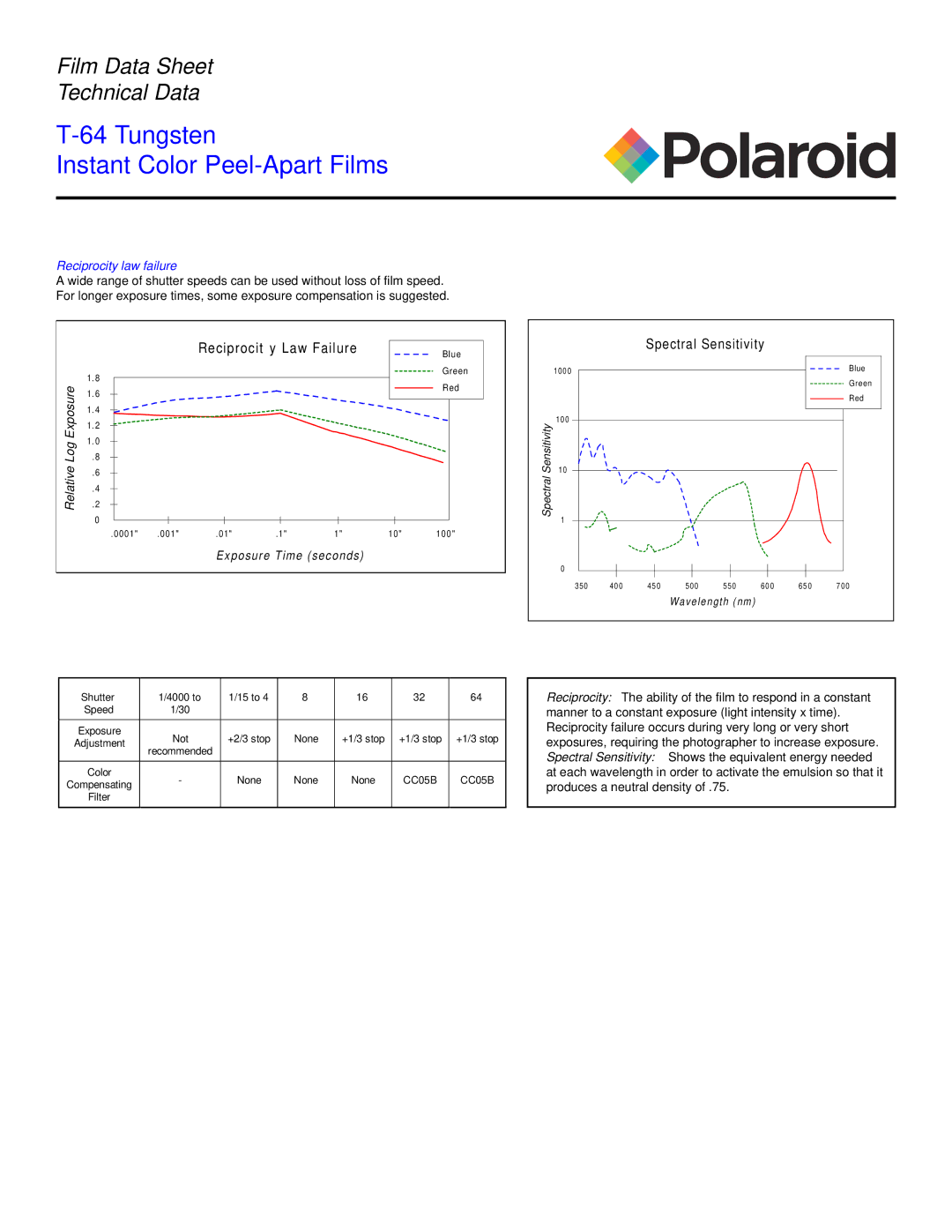T-64 specifications
The Polaroid T-64 is a remarkable instant film used primarily in the Polaroid photographic system, introduced in the mid-1960s. Known for its vibrant color reproduction and instant processing capabilities, the T-64 film quickly became a favorite among photographers, artists, and enthusiasts alike.One of the defining features of the Polaroid T-64 is its ability to deliver high-quality images with rich color saturation. The film's color emulsions were designed to capture a wide gamut of hues, making it ideal for a variety of photography genres, from portraiture to landscape. The prints produced by T-64 film are characterized by their sharpness and clarity, owing to the advanced film processing technology used in its manufacturing.
A significant technological advancement of the Polaroid T-64 is its use of a patented integral film technology. This means that the film cartridge itself contains all the necessary chemicals for developing the image, eliminating the need for additional darkroom processes. After exposure, the film develops automatically, producing a finished print ready for viewing in just a few minutes. This unique feature revolutionized photography by allowing instant gratification for both amateur and professional photographers.
Another notable characteristic of the T-64 film is its durability. The prints are coated with a protective layer that not only preserves the image but also resists fading and environmental damage over time. This makes the T-64 particularly suitable for archivally important photographs, as well as for everyday use in various settings.
In terms of shooting dynamics, the Polaroid T-64 film has a relatively high ISO rating, typically around 100, allowing photographers to capture images in moderate lighting conditions without significant grain. This versatility made it a popular choice for both indoor and outdoor photography.
The T-64 film was compatible with several Polaroid camera models, further enhancing its accessibility. The ease of use and straightforward mechanics of Polaroid cameras meant that even novices could achieve compelling photographic results with T-64 film.
Despite its popularity, Polaroid discontinued the T-64 film in the early 2000s, a decision that sparked nostalgia and demand for instant film among fans of traditional photography. Nevertheless, the legacy of the Polaroid T-64 lives on, celebrated for its significant contribution to the evolution of instant photography and its iconic status within visual culture. Today, the Polaroid brand continues to innovate, drawing inspiration from its rich history while embracing new technologies and artistic approaches.

